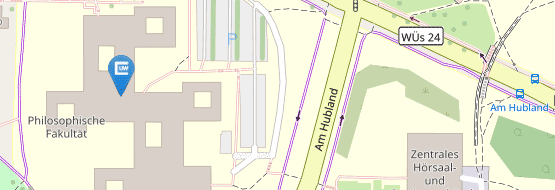PhD projects and postdoctoral projects
PhD projects

Carina Stick: Politeness in Hong Kong business correspondence: investigating genre development and nativization processes from a diachronic perspective
As Hong Kong has never gained independence, the status of Hong Kong English as a distinct variety has been questioned by many researchers (cf. Evans 2015: 391-394). Therefore, the common approach of tracing structural nativization in post-colonial varieties through synchronic analysis seems even more problematic for Hong Kong English than for other post-colonial varieties (Biewer et al. 2023). Furthermore, most studies compare features of a new variety exclusively to Present-Day Standard (British) English. However, such an approach neglects spatial and temporal variation of the superstrate (cf. Mesthrie & Bhatt 2008: 45). Therefore, the Hong Kong English project, of which this PhD project is part, aims to provide empirical evidence for the development of Hong Kong English from a diachronic perspective. One of the most prevalent challenges the study of structural characteristics of post-colonial varieties bears is that features which were formerly assumed to be variety-specific may turn out to be genre-specific characteristics, meaning that genre might be a stronger predictor of variation than variety (Noël & Van der Auwera 2015). This is why one of the primary goals of the PhD project is to retrace genre developments in a genre that takes a special place in Hong Kong, namely business correspondence. Business correspondence is of particular interest in the context of Hong Kong English as Hong Kong is a financial and commercial hotspot and has been an important location for head offices of banks and companies since the very beginnings of the colony. Within the field of business correspondence, the analysis of politeness strategies is an important area of research. To date, most research on politeness in business correspondence has investigated the speech act of making requests (e.g. Bargiela-Chiappini & Harris 1996, Del Lungo Camiciotti 2008). As politeness is expressed and perceived differently across cultures, the analysis of requests in the increasingly globalized world of international business communication is a promising starting point. However, requests often occur in combination with other speech acts, such as justifications (Kong 1998), apologies (Blum-Kulka & Olshtain 1984), or thanking. As of today, no extensive diachronic study of requests in combination with other speech acts has been done, enabling the project to provide valuable insights in a sparsely researched field. Based on the aforementioned issues and research gaps, this PhD project will investigate developments in the use of requests in combination with other speech acts in Hong Kong business communication throughout the 20th century, drawing connections to genre development and processes of nativization.

Aditya Upadhyaya: Tracing the Dynamics of Degree Adverbs in Hong Kong English Newspaper Discourse: A Study on Genre Development and Nativization
Hong Kong, a former British colony and now a part of People’s Republic of China (PRC) as The Hong Kong Special Administrative Region (HKSAR) after its handover to PRC in 1997, has English as one of its three official languages among Cantonese and Putonghua (Setter et al. 2010: 4-5). Unlike other British colonies, Hong Kong never achieved independence. The Hong Kong Project has its starting point in Schneider’s dynamic model of postcolonial Englishes, which advocates integrating diachronic perspective and “different types of contact scenarios” or extra-linguistic factors such as socio-historical conditions and identity constructions in analyzing postcolonial varieties of English (2007: 24). According to Schneider, Hong Kong English (HKE) is in Nativization phase since the 1960s (2007: 135-136). However, Schneider’s focus on the diachronic perspective and Hong Kong’s complex identity shaped by both past and current socio-political contexts, which are crucial for understanding the evolution of English in Hong Kong remains scarce in these studies. Furthermore, despite several studies (Noël and van der. Auwera, 2015; Biewer et al., 2020; Bohmann, 2020) suggesting that genre could be a stronger indicator of variation than variety, the differences between changes in genre developments and varietal developments have rarely been explored in the context of Hong Kong English. Why is this the case? The limited availability of diachronic corpora of Hong Kong English has resulted in a predominance of synchronic studies of this variety using corpora like ICE, GloWbe. These studies fail to elucidate “to what extent a new postcolonial variety of English has diverged across time from the historical input variety” (Mukherjee and Schilk 2012: 191). Accordingly, a description of “English in Hong Kong” or “Hong Kong English” remains incomplete without considering Schneider’s parameters through time. The proposed study seeks to bridge these gaps by investigating the genre of newspaper writing in Hong Kong, using the diachronic corpus of Hong Kong English, DC-HKE. Newspaper writing, as a genre, has the longeststanding tradition in Hong Kong, with English communication dating back to the establishment of the British colony in the mid-19th century until present day. While news writing constitutes a realm of professional language use with articles discreetly edited, a more comprehensive investigation of newspaper discourse may reveal aspects of nativization and genre development through certain features. The envisioned PhD project is particularly concerned with how stance is portrayed in HKE newspaper discourse using degree adverbs.
Regina Grund: Mobile Grammar Learning: Learner Attitudes, Effectiveness, Practical Implications for Future Development
The emerging field of digital learning has brought forth learning apps (edu-apps) that enable self-regulated learning independent of time and place. Recent developments - such as distance education - have made self regulation and the use of new technology increasingly indispensable. During the closure of schools, mobile phones were the technical device most used for studying (mpfs, 2020). Therefore, edu-apps have the potential to successfully integrate self-regulated grammar learning into students’ daily study routines. In the context of foreign languages, however, the focus has been on vocabulary rather than on grammar learning, both with regard to currently existing digital offers (Elsner, 2019, p. 50) and concerning research in the field of self-regulated learning strategies (Oxford, 2017, p. 245). In addition, coursebook grammar contents partly lack detailed explanations of linguistic structures (Slabakova et al., 2020, p. 42) and might thus be capable of improvement.
This is where a more intense cooperation of linguistics and TEFL methodology is required in order to align linguistic findings and foreign language learning material. More precisely, the grammatical feature in consideration is future time reference (see König & Gast, 2018). From there on, this doctoral project aims to explore the influence of edu-apps on students’ second language (L2) grammar development. In a first step, schoolbooks and currently existing apps will be evaluated. Potential gaps will be bridged by means of practice material presented within an app. The digital input itself will vary in order to reveal how learning apps need to be designed so that they can be realized to their full potential.
In a further step, the respective impact on students’ grammar proficiency combined with their attitudes and suggestions will result in ideas for developing an app on English grammar in a subsequent project. This app will ideally be both effective and motivating and thus enable successful self-regulated learning in the future. The overall goal of this project is to create and test digital grammar learning material for L2 learners of English, which will drive forward research on the linguistics-TEFL interface and add findings to the new area of digital learning.
Matthias Krebs: Allophonic realisations of word-medial /t/ and target accents for non-native speakers of English
Studies into non-native speech have thus far focused primarily on segmental and supra-segmental features that differ significantly from native speech (Gut 2007), both acoustically and perceptually. The present study aims to characterise variable surface realisations of segments due to predictable phonological processes in non-native English, and thus to classify speakers in terms of target accent according to their choice of allophone in certain linguistic environments.
American English speakers differ from British speakers in their production of /t/ in most positions preceding an unstressed segment. Flapping is the preferred choice in these positions (Eddington and Elzinga 2008; Patterson and Connine 2001), and occurs with a very high probability in environments following a stressed vowel (e.g. Zue and Laferriere 1979). Conversely, aspiration (or frication) is favoured by BrE speakers in these contexts (Cruttenden 2014; Schleef 2013). The choice of variant can thus be seen as a shibboleth of the respective accent, and be operationalised as an indicator of target accent of non-native speakers.
In this production study, American and British native speakers read out a carefully constructed story containing carrier-words eliciting /t/ in word-medial and word-final positions. The choice of variant ([th] vs. [R]) is assessed, and flapping rates calculated. As an independent check, the instances of /r/-dropping in preconsonantal positions are also regarded.
36 advanced German L2 learners of English at Würzburg University were subsequently given the same items to read. Their flapping rates and other factors indicating accentedness (and target-accent) are aligned on a continuum between American and Britsh English. The results will be correlated with accent-ratings conducted by native British and American speakers, and cross-referenced with questionnaire-data in order to yield implications for order of acquisition, methods for nativeness-ratings, the influence of extralinguistic factors like time abroad and motivation etc.
Completed PhD projects
Lisa Lehnen: Integrating corpus-based and interactional approaches to pragmatic variation in World Englishes – A study of DISAGREEMENTS among speakers of English in Hong Kong
Within the study of varieties of English, many descriptions have largely focused on phonology, morphosyntax and lexis, often neglecting the level of pragmatics and discourse (but see, for instance, Biewer, 2015 for an exception). In my PhD project, I tackle this research gap by examining pragmatic variation, more specifically the speech act of disagreement, broadly defined as “the expression of a view that differs from that expressed by another speaker” (Sifianou, 2012, p. 1554). Disagreements are highly context-sensitive and multifunctional in that they may challenge but also maintain or even enhance harmony. To account for this functional diversity, they will be studied from an interactional perspective, including insights from rapport management (Spencer-Oatey, 2008) and conversation analysis (Pomerantz, 1984).
A further goal of my project is to combine the study of English as a second language (ESL), viz. acquired as a second (native) language in mostly postcolonial contexts, and English as a foreign language (EFL), viz. non-native varieties acquired in institutional settings. This distinction introduced by Kachru (1988) has largely been maintained despite the development of more dynamic models (Schneider, 2007; Buschfeld & Kautzsch, 2017). The resulting theoretical and methodological division between studies on either variety type, has, however, been questioned due to the common basis of the fields (Mukherjee & Hundt, 2011, p. 2). To address this division, I incorporate insights from variational (Schneider & Barron, 2008), postcolonial (Anchimbe & Janney, 2011) and interlanguage (Kasper & Blum-Kulka, 1993) pragmatics.
A cross-varietal study of disagreements requires large amounts of comparable data, which is why I first adopt a corpus pragmatic approach and analyse disagreements in casual conversations from the Jamaican and Hong Kong component of the International Corpus of English (ICE), and from the Vienna Oxford International Corpus of English (VOICE). In order to enhance the investigation, the second part of my project deals exclusively with English in Hong Kong whose status has become even more prone to change since Hong Kong’s hand-over to the People’s Republic of China in 1997. I investigate disagreements among groups of speakers in Hong Kong who acquired and use English differently to gain a general insight into the dynamics of pragmatic variation, and reveal aspects of the variety status of English in Hong Kong.
Christina Domene Moreno: Beyond transfer? The acquisition of an L3 phonology by Turkish-German bilinguals
Within the relatively new area of research on Third Language (L3) Acquisition, the subfield of phonology is growing, but still relatively understudied. Testing the current L3 models adopted from research on L3 syntax (see Rothman 2010, Bardel & Falk 2012, Flynn et al. 2004), the studies conducted in the area have mostly focused on the source and directionality of language transfer – both into the L3 and into the respective background languages – with some recent excursions into the role of extra-linguistic factors for multilingual learners (e.g., Wrembel 2015). The findings so far (mostly on production, with perception lagging behind) have been very diverse and, depending on the concrete study, can often be taken to give evidence for any of the prevalent models. This can be attributed to the wide range of different speaker and learner biographies as well as their language combinations and state of acquisition, but crucially the dilemma seems to be inherent in the (phonological) system in and of itself since viewing phonological interlanguage transfer as a one-dimensional and immediately transparent process based on direct correspondences between language systems does not seem to capture the complex nature of the phenomenon.
In this doctoral thesis I investigate the acquisition of an additional phonological system by child and adult German heritage speakers of Turkish. Specifically, I aim to explore how the learners deal with diverse phonological contrasts that promote positive contra negative transfer from their HL (Turkish) and their L2 (German), and how their perception and production is modulated by cognitive and affective variables. Moreover, I test contrasts that can be found neither in the HL nor in the L2 phonological system to tease apart transfer phenomena from effects caused elsewhere in the bilingual mind when dealing with a new system.
The studies will shed light both on the question of how a new language is shaped and affected by different existing systems and on how two or more phonological grammars co-exist and/or interact in a speaker’s mind. I will argue that, rather than being regarded as simple full projection of language-specific property sets onto the target language, phonological transfer in multilinguals needs to be considered as a process of complex interactions and layers that are established on the level of individual phonological properties and abstract (typological) associations.
Marie-Christin Himmel: The production of liquids in first language attrition and second language acquisition.
In this dissertation, I focus on the differences in the sound patterns of a bilingual’s languages which do not only emerge in the precise phonetic realizations of L1 sounds but also in language-specific distributional patterns that determine the realization of these sound categories in different phonetic contexts. While previous work in L1 attrition primarily focused on a small set of phonetic properties (esp. VOT, e.g., Flege, 1987), the effect of variables other than the L2 which are known to give rise to variable realizations has been neglected. Thus, little is known as to whether bilinguals’ realizations of an L1 sound category in different phonetic contexts (e.g., position within a syllable) are subject to change in L1 attrition, and whether such changes arise mainly due to long-term exposure to different distributional patterns of an equivalent L2 category. I address these questions by investigating L1 attrition of phonetics in American English-German late bilinguals by exploring the variable realizations and distributional patterns of two sounds known to be subject to a considerable degree of gradience and variability, namely English /r/ and /l/. Although rhotics and laterals are known to change under L2 influence (e.g., de Leeuw, 2008; Ulbrich & Ordin, 2014), the effect of contextual variables and whether such variables also have an impact on the likelihood and magnitude of L1 attrition remains unexplored. I therefore investigate phonetic and distributional changes to L1 rhoticity and clear-dark /l/-allophony in American English-German late bilinguals, a language constellation which offers an instructive test case to investigate the causes of L1 attrition as well as the precise source from which changes due to L1 attrition emerge. Furthermore, as /r/ and /l/ exhibit gradience and variability due to various positional and phonetic factors (e.g., preceding vowel, syllable structure) in many native varieties of English, the changes to the two segments under L1 attrition can also shed light on processes which contribute to sound change in general. The results of my study for which I collected production data from 12 L2-dominant American English-German late bilinguals as well as monolingual controls for each of the bilinguals’ languages performing various tasks revealed that the late bilinguals showed non-convergence with the monolinguals in both of their languages in both /r/ and /l/. Moreover, bilinguals in English showed distributional differences sensitive to contextual constraints (e.g., for /r/, type of pre-rhotic vowel and morpho-phonological environment; for /l/, position of the lateral within the syllable) known to affect /r/ and /l/ in other English varieties, their (non-targetlike) L2 German productions of postvocalic /r/ in were not context-sensitive. I interpret these results as evidence that bilinguals operate in separate phonological grammars for the L1 and the L2 respectively which approximate the German and English monolingual norm respectively which however operate within the phonetic space, yielding persistent L1-L2 interference in phonetics. Furthermore, I argue that the changes in L1 attrition are merely induced by the acquisition of another language whereas the structural changes are not determined by the L2, but instead reflect universal trajectories of language change.
Habilitations
Ninja Schulz: Functional development of auxiliary DO in affirmative contexts in World Englishes
Auxiliary DO is most commonly treated in connection with the NICE properties of auxiliaries, which function as operators in negative sentences, participate subject-verb inversion, replace the main verb in elliptic sentences, and carry stress in emphatic contexts. These functions of auxiliary DO emerged in the Early Modern English period; yet, while the use of DO in questions and negatives rose dramatically in the course of the 17th century, the numbers for DO in affirmatives (henceforth DO+) increased only until the mid-16th century but then dropped again (cf. Kroch 2003); however, it has never disappeared completely. Even though there is no consensus on its origin (cf. Denison 1993), DO+ has fulfilled various purposes in its history, for instance, it was used to avoid complex consonant clusters (Stein 1986), to provide an extra syllable in poetry (Ellegård 1953), and as alternative past marker for irregular verbs (Poussa 1990),
In Present-Day English DO+ is associated with marking contrast (However, I DO think that...) or adding emotive emphasis (I DO feel sorry.) to an utterance (cf. Quirk et al. 1985); in these contexts, DO is usually stressed. However, studies have shown that DO+ is not always stressed and that it can assume a number of discursive functions as well (cf. Nevalainen and Rissanen 1986; Ranger 2015). For example, it can reintroduce a topic in the discourse (I did mention that...), or express epistemic stance (The results do suggest that...). Furthermore, in Irish and Welsh English as well as in some Southwestern dialects of English English, unstressed DO is used as aspect marker, most notably for habitual action, but also to express the progressive. These aspectual functions are also attested for a number of new varieties of English, for example, Trinidadian Creole, Cameroon English, and Newfoundland English (Kortmann and Schneider 2004; Kortmann 2004).
The present research project investigates the various functions of DO+ and their development in Inner and Outer Circle varieties of English, including a) the grammatical functions (esp. aspect marking), b) its function in emphatic contexts and c) its discursive/pragmatic functions. Special attention is paid to the following questions:
Are there significant differences regarding the use of DO+ in Inner and Outer Circle varieties of English?
Can the distribution of DO+ or the (non-)occurrence of different functions be correlated with the developmental stages of Post-colonial Englishes (cf. Schneider 2009)?
Which (other) factors influence the establishment or loss of functions of DO+ in different varieties of English?
Is the use of auxiliary DO as aspect marker in new varieties of English an inherited feature (from non-Standard British varieties or earlier forms of English) or is it the result of independent developments triggered, for instance, by language contact or universal (learner) language features?
Besides a more general assessment of the functions of DO+ in World Englishes based on various components of the ICE-family, the project focusses on two regions more specifically, i.e. West Africa and the Caribbean, where, on the one hand, English-based creoles and standardised varieties of English co-exist, and where, on the other hand, the use of auxiliary DO as aspect marker is an attested feature of several varieties.








